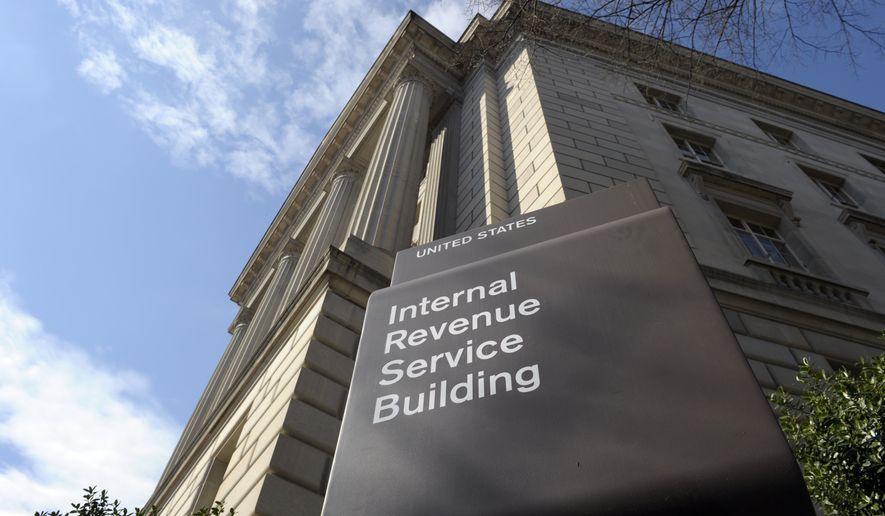Uncle Sam is making a lot of money. But he doesn’t quite know why.
Driven by a post-pandemic boom, federal revenue will reach levels not seen in two decades, with taxes paid by individuals driving much of the surge.
That news, combined with less pandemic-related spending, is helping tame the budget deficit, which will come in around $1 trillion this year. Over each of the past two years, the government ended up roughly $3 trillion in the red.
The Congressional Budget Office said the surge comes chiefly from individual income taxes, which account for 10.6% of gross domestic product this year. That is the highest rate in the 109-year history of the tax, according to The Wall Street Journal.
Still, the money is a mystery.
CBO analysts say a third of the rise is a result of economic growth and another third is from the end of COVID-era payroll tax deferrals, which means payments from the past two years are arriving now.
The other third “cannot yet be explained.”
“Corporate tax collections were larger in 2021 and early 2022 than can be fully explained by currently available data on business activity for those years,” CBO analysts wrote. “The factors that contributed to the unexplained strength in receipts will not become fully apparent until information from tax returns becomes available over the next two years.”
The rest of the balance sheet looks normal.
Payroll taxes, measured as a percentage of GDP, are static. Corporate income taxes are down just a smidgen.
Brian Riedl, a senior fellow at the Manhattan Institute, said the superlative revenue numbers probably won’t last.
“As the economic chaos of the past three years fades away, I would expect revenues to revert back to historical trends,” he said.
He said wages aren’t rising. The answer might be Uncle Sam, who pumped out trillions of dollars to bolster the economy in the equivalent of a mass-level marketing scheme.
“This may ultimately reflect massive Federal Reserve and congressional stimulus pushing up consumer spending, which in turn raises taxable business income,” Mr. Riedl said. “Essentially, we may be just taxing all the stimulus money that was received and spent.”
According to CBO projections, the government this year will collect $4.826 trillion, or 19.6% of GDP. That is up roughly $800 billion from last year, when total revenue was 18.1% of GDP.
Over the past 50 years, federal revenue has averaged 17.3% of the nation’s economic output. CBO projects revenue to dip to 18.6% next year and stabilize later this decade at about 18.1%.
The extra money has helped cap what otherwise would look like a runaway deficit.
If revenue had come in at 2021 levels, the $1 trillion deficit would have been about 30% worse. If revenue matched the 50-year average, the deficit would have been 50% worse.
Democrats say President Biden deserves credit for the good numbers. They point to a $1.9 trillion infusion that the White House and the Democratic-led Congress pumped into the economy early last year, delivering cash to state and local governments, businesses and consumers.
For some Republicans, particularly President Trump’s economic team, the numbers are confirmation that their 2017 tax cuts have delivered a supercharged economy that is running so hot that a major cut to the corporate income tax rate not only hasn’t sapped the government of money but is producing more.
The 2017 law reduced personal income tax rates and slashed the corporate income tax rate from 35% to 21%. It also front-loaded deductions for equipment purchases. Critics said the government would be starved of cash. Instead, corporate tax takes are higher than ever.
“Now the evidence is in. Our critics were wrong, and the economic data have met or even exceeded our predictions,” Tyler Goodspeed and Kevin Hassett wrote in a Wall Street Journal piece last month, before the CBO numbers were released.
The two men, who led the White House Council of Economic Advisers under Mr. Trump, said median household incomes rose, business investment surged and corporations booked more profits in the U.S. than overseas.
That was critical to the federal revenue picture because, as they wrote, “21% of a positive number is much larger than 35% of zero.”
Analysts at the Tax Policy Center and American Enterprise Institute say the strong economy, inflation and government coronavirus spending are powering corporate tax revenue. All of it was good for companies’ bottom lines, they said, so it was good for the federal government.
“Higher corporate profits translate into higher corporate taxes,” wrote William G. Gale and Steven M. Rosenthal of the Tax Policy Center and Kyle Pomerleau of the American Enterprise Institute.
They said the argument that the 2017 law spurred more business investment is “inconsistent” with the rate of return data, which should have fallen if investment was boosting corporate assets.
• Stephen Dinan can be reached at sdinan@washingtontimes.com.




Please read our comment policy before commenting.